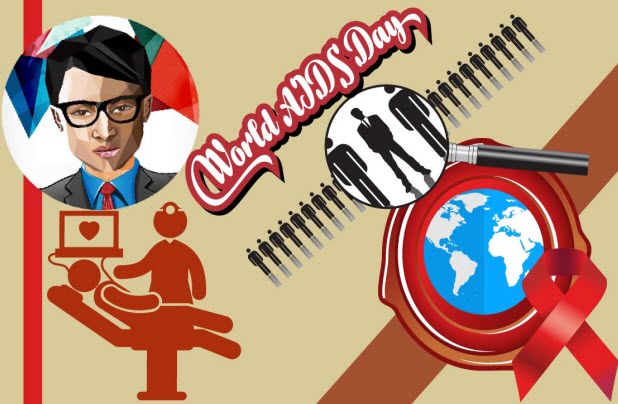
The World Health Organization recognized the need to publicize the growing AIDS pandemic by organizing the first World AIDS Day in 1988.
In almost thirty years of human immunodeficiency virus (HIV), the virus that causes AIDS, the gay community has borne its fair share of victims.
A quote from Edmund White, gay novelist, captured the impact of the AIDS pandemic on the gay community when he said, “To have been oppressed in the fifties, freed in the sixties, exalted in the seventies, and wiped out in the eighties is a quick itinerary for a whole culture to follow. For we are witnessing not just the death of individuals but a menace to an entire culture.”
AIDS is not just a gay disease; it affects people from all walks of life, all corners of the planet and all age groups. The stigma of AIDS being a gay disease began early in the history of the pandemic as a scientist labeled the disease Gay-Related Immune Disorder (GRID). The name was changed to AIDS in 1982 when the disease continued to show up among a wide variety of individuals.
Even though AIDS targets all groups of people, the gay community has been disproportionately affected.
Current Statistics on the Status of AIDS in the Gay Community
In the United States, HIV infections are on the rise among gay men, the only risk group showing an increasing number of infections.
According to the Center for Disease Control and Prevention (CDC), nearly half of the one million people living with HIV in the USA are gay/bisexual. Among the gay population, there are a total of approximately 27,000 new cases annually. The rise of infections has been on-going since the 1990’s.
These statistics are causing grave concern among gay community advocates and activists. Sept. 27, 2009 marked the second anniversary of National Gay Men’s HIV/AIDS Awareness Day. This specific campaign targets the younger generation who were not around during the deadly early days of the AIDS pandemic. Activists believe this national awareness day is a necessary tool in addition to the World AIDS Day campaign
AIDS Prevention the Best Course of Action
Educating the new generation of gay/bisexual men is considered paramount in halting the upward trend of infections. At the beginning of the AIDS crisis, the education campaign on prevention worked to stem the tide of the pandemic.
Dr. Jonathan Mermin of the National Center for HIV/AIDS, in a statement on Sept. 27, 2009 said, “we must not only expand access to services, we must confront challenges such as complacency, homophobia, and stigma that gay and bisexual men continue to face.”
This homophobia and stigma can prevent men from getting tested for the disease and thus they are not armed with necessary knowledge of their status. The National Institute of Health (NIH) reports that up to 40,000 individuals are unaware they are HIV positive.
Recent Progress in AIDS Research
By 1984, 3,500 Americans were diagnosed with AIDS; 1,500 of those people died. By 1987, 36,000 were diagnosed and almost 21,000 people had died from AIDS. As of 2006, according to the NIH, 520,000 Americans had succumbed to the disease.
Combination antiretroviral therapy continues to be the single most important tool in the fight against AIDS. Since the first use of antiretrovirals over a decade ago, there has been a dramatic decrease in HIV – related deaths. However, the NIH says these therapies are now associated with a series of serious side effects and long term complications.
In a New York Times editorial, Dec. 14, 2006, “Rare Good News About Aids”, it was reported that research found that circumcision prevented 60-70 per cent of new AIDS infections.
Mark Schoofs, in the Wall Street Journal, on Nov. 7, 2008, in “A Doctor, A Mutation and a Potential Cure for AIDS“, reported that, “The startling case of an AIDS patient who underwent a bone marrow transplant to treat leukemia is stirring new hope that gene-therapy strategies on the far edges of AIDS research might someday cure the disease.”
Wear a Red Ribbon for World Aids Day
The Red Ribbon is the international symbol of support for people living with AIDS. Red ribbons are worn to raise awareness, and to help eliminate the stigma and prejudice against people living with AIDS.
Donations for the Red Ribbons go to supporting research to combat HIV/AIDS.
Perhaps one day the research will produce a cure. Currently, prevention strategies including safe-sex practices, encouraging risk groups to get tested and education at home and abroad are the best combatant against the AIDS pandemic.